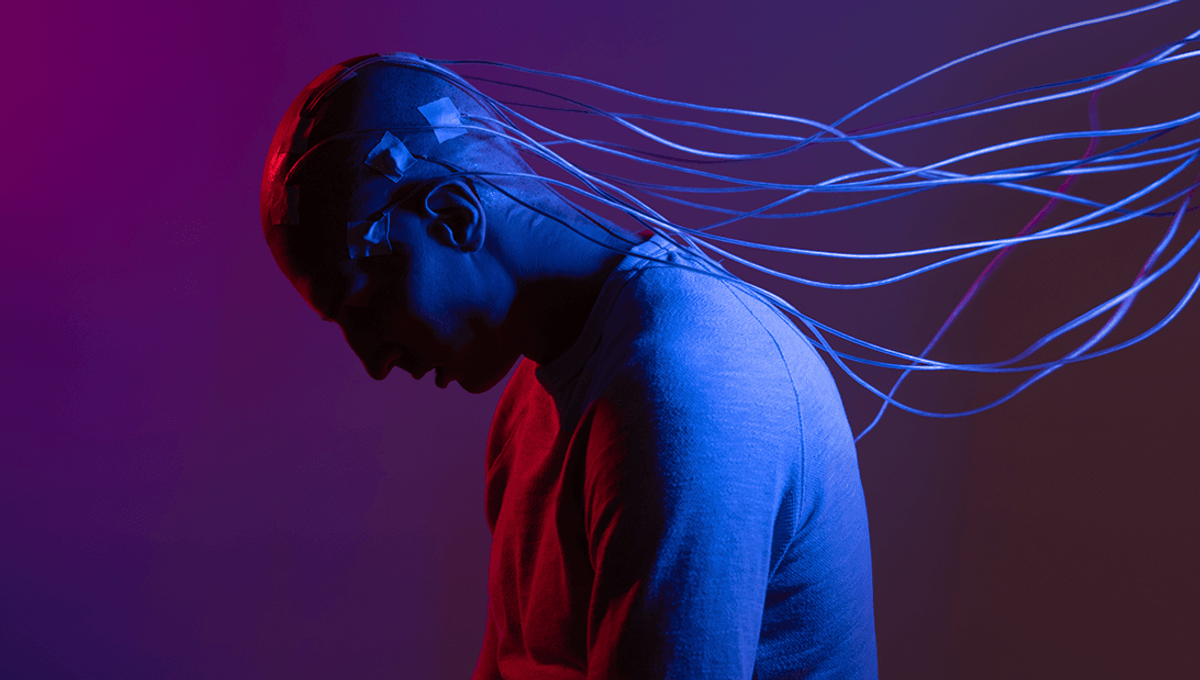
In 1954, American psychologist James Olds and British-Canadian neuroscientist Peter Milner implanted electrodes at various positions on the brains of rats.
The team placed the rats inside a “Skinner box“, a small enclosure with a lever or button inside that the animals can learn to press in order to gain a reward. In this case, the “reward” was electronic stimulation of their brains.
Leaving the rats in their box, they found that the rats would regularly go to press the lever, indicating that there are areas in their brains “where electrical stimulation is rewarding in the sense that the experimental animal will stimulate itself in these places frequently and regularly for long periods of time if permitted to do so.”
But what about humans? What would we do if left with a button to stimulate the pleasure centers of our own brains? Thanks to a few (sometimes ethically-dubious) experiments, we do know a little about this strange subject.
In 1972, American psychiatrist Robert Galbraith Heath became the first researcher to show that brain stimulation reward worked on humans too, in an experiment that has been criticized for being unethical (and they have a good point). Heath took several subjects with various mental illnesses and allowed them to self-stimulate using the press of a button. Most would press the button frequently, while the team monitored their brains for changes in activity.
“One of the most dramatic cases described by Heath was ‘B-19,’ a young man treated for chronic depression, delusions, thoughts of suicide, epilepsy, and (circa 1960s) for being gay,” a review of brain stimulation studies by American psychologist and neuroscientist Professor Kent C. Berridge explains, adding that he “voraciously self-stimulated his septal/accumbens/pallidal electrode.”
B-19, who was 24 years old at the time, was allowed to wear the device for up to three hours each session. While it is debated whether the device actually gave him pleasure, he certainly did press the buttons a lot, showing a preference for specific areas of the brain.
‘‘On one occasion he stimulated his septal region 1200 times, on another occasion 1500 times, and on a third occasion 900 times. He protested each time the unit was taken from him, pleading to self-stimulate just a few more times,” Heath explained in his study. “The buttons attached to other brain sites were never used more than a few times during each 3-hour period.”
Part of the man’s “treatment” was aimed at “altering his sexual orientation”, a goal now rightly seen as unethical as it is stupid. But it does get worse. As part of the experiment, he was given heterosexual pornography to watch, and his reaction monitored. Unsurprisingly, without brain stimulation he was not keen on the pornography. When combined with brain stimulation, Heath reported that the man was able to orgasm whilst watching heterosexual pornography. After that, he took the experiment further, hiring a young sex worker for the next step.
“A twenty-one-year-old female prostitute agreed, after being told the circumstances, to spend time with the patient in a specially prepared laboratory,” Heath explained, adding that wires were fed into the room from outside to give them privacy.
According to the study, the man was able to complete sex with the hired sex worker, seen as some measure of success for brain stimulation. However, even the study itself provides clues to how uncomfortable the experience was for the man and sex worker, and no lasting effects were reported (spoiler alert: “conversion therapy” is unscientific and dangerous).
“In separate interviews after the study, both the patient and the young woman related his anxiety and reluctance when they were left alone, although his apprehension gradually subsided,” Heath wrote, adding that both participants reported that “as he started to be aroused, he felt the need to confess his homosexuality and generally presented himself negatively, seemingly as a defense against progressing further.”
The study has been roundly criticized as being unethical, for fairly obvious reasons. It was not good science either.
“Wrote Heath, the stimulation caused ‘feelings of pleasure, alertness, and warmth (goodwill); he had feelings of sexual arousal and described a compulsion to masturbate’. The stimulation evoked strong sexual arousal and interest,” Berridge wrote. “But it did not produce pleasurable sexual orgasm, not even after a thousand consecutive stimulations, unless B-19 was allowed to simultaneously masturbate (or to copulate with a prostitute who was persuaded to provide therapy on one occasion, in what must be one of the most astounding accounts ever published in scientific literature).”
Berridge added that pleasurable feelings may have been inferred by Heath, and maybe the patient to a certain extent, as the patient pressed the button many, many times. But that didn’t mean they were there.
“What it did instead was to make him want to do sexual acts, and to make a wider array of stimuli sexually arousing (such as heterosexual pornographic films that ordinarily were unexciting to him),” Berridge wrote.
“Heath simply had no other way to explain it. Still, in this case the actual evidence for true pleasure is equivocal.”
Source Link: What Happened When Patient B-19 Was Given A Brain Stimulation Device And A Button?